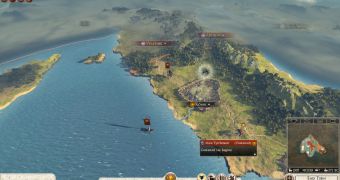When I was younger, I was fascinated with the life of Caesar, especially his initial successes and I remember vividly his position as governor of Gaul, which he used to expand the power of the Roman Republic while also increasing his own gravitas and the loyalty of his legions.
So I was pleasantly surprised to discover that one of the biggest changes in Total War: Rome II is that the team has eliminated the traditional province system of the series, which linked each administrative region to a city and a few outlying resource points.
The newly launched game has regions as the main administrative entity, made up of more than one city, and that streamlines the management activity of the player and also creates some meaningful choices.
Each building has region wide effects, which means that cities tend to become more specialized, and it always makes sense to capture an entire area because that offers the option to implement powerful rules that can enhance its productivity.
I love how this change practically rewired my entire expansion strategy in Rome II.
In the first game set in the Classical period, I tended to think about warfare in terms of capturing cities, aiming for those that contained interesting buildings or held a strong strategic position first.
In the new Total War, I am interested in the smallest possible regions or in the ones closest to my active armies because conquest is not efficient if I get just one town under my control.
The game also makes it harder to keep hold of conquered areas and that means it’s actually challenging to keep an offensive going from a logistical standpoint, something that most generals from Roman times would certainly sympathize with.
Our full review for Total War: Rome II is available and check back for more Gamer Diaries.

 14 DAY TRIAL //
14 DAY TRIAL //